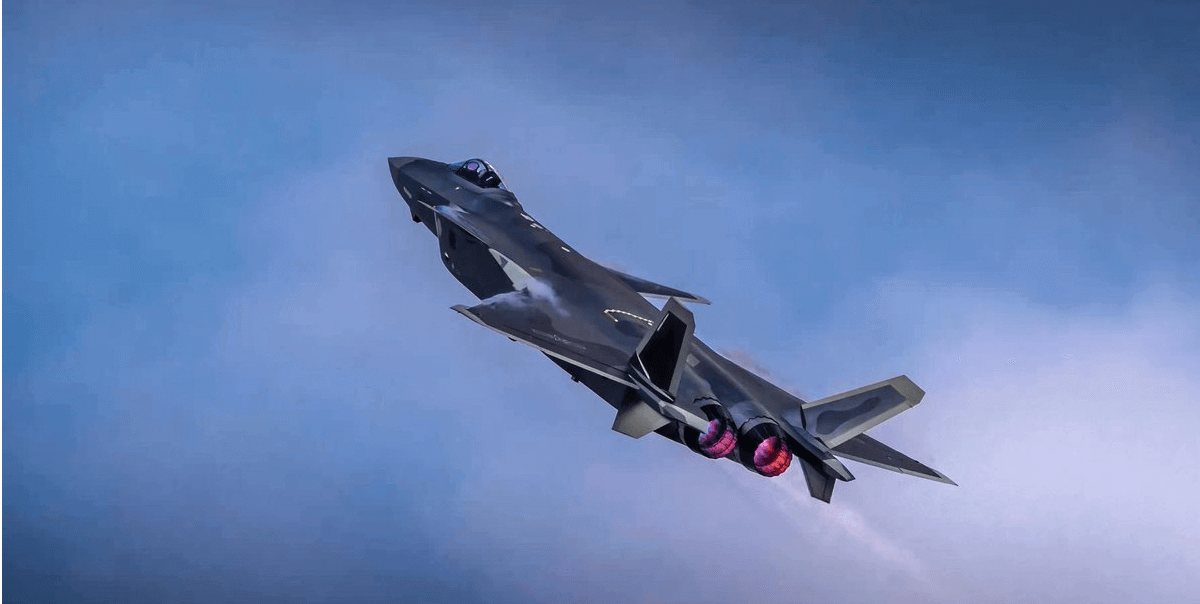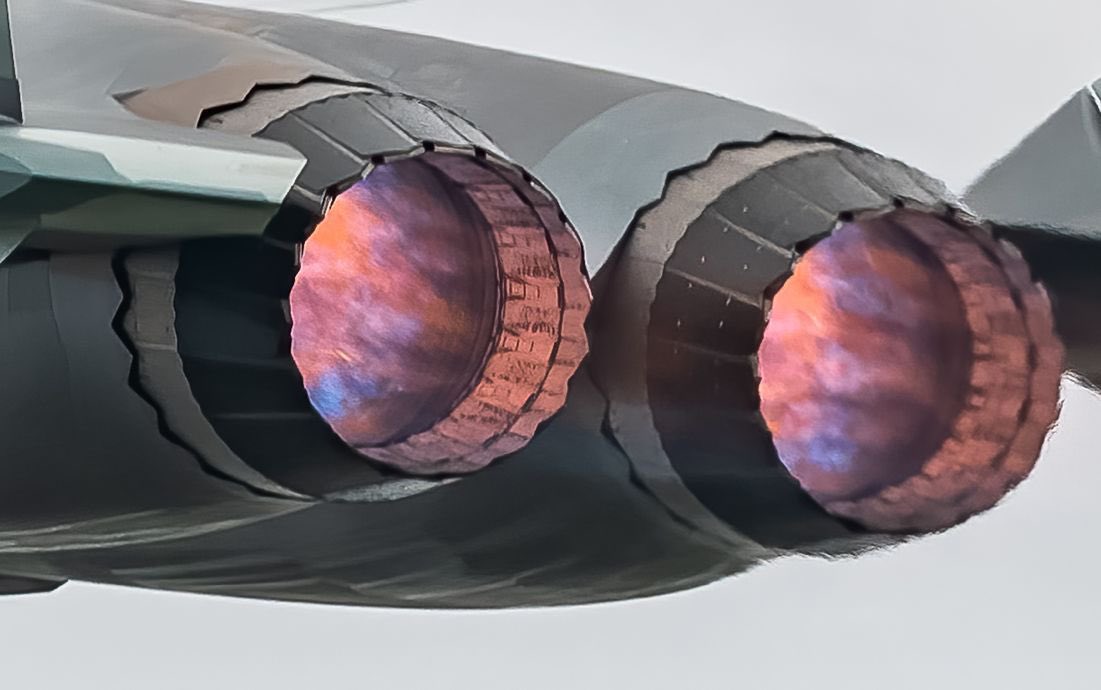In recent times, China has claimed to have achieved substantial advancement in military technology with an eye on enhancing the combat capability of its Air Force. It has been aggressively promoting its stealth fighters, the J-20, and JC-31 as it aims to match the US.
Chinese analysts believe that the hostility with its neighbors in the South China Sea and with the United States in the wider Indo-Pacific has necessitated technological innovation to narrow down the capability gap with the US, especially in jet engine development.
To that end, China has now become capable of resolving complex problems with fighter jet engines, owing to efforts such as the establishment of a laboratory dedicated to aviation component research, claimed the Chinese political advisor who delivered domestically developed engine technologies for the J-20, state-run Global Times reported.
Chinese analysts have stated that China’s technical gap with leading countries like the United States in terms of jet engines has closed, and advanced technologies like higher thrust-weight ratio, vector thrust control, and variable cycle are likely under development.

This announcement comes shortly after China hiked its defense budget to 1.45 trillion yuan ($230 billion), up by 7.1% from $209 billion last year, a significant part of which is to be allocated to the production of J-20s, as previously reported by the EurAsian Times.
Further, China had announced in January that it will begin upgrading the engines of its most sophisticated stealth fighter jet, the J-20 this year, to get it closer to the performance of the American F-22 Raptor.
The J-20 is powered by the indigenously developed WS-10C engine which is currently being upgraded with thrust-vector technology.
The technology, which was being worked on for two decades in China is supposed to add more teeth to the engine and enhance the maneuverability of the J-20 aircraft to match the capability of the American F-22. To rival the Raptors in the long run, the J-20 fighter jets will be later equipped with WS-15 engines.
These developments demonstrate that China is working hard to not only improve its technological capabilities but also to achieve self-sufficiency so that it can compete with, if not outperform, the US Air Force.
Self Sufficiency and Complete Capability
Li Zhiqiang, a member of the National Committee of the Chinese People’s Political Consultative Conference, said in a report by China Central Television (CCTV) that China has gained full capability to develop engines for military aircraft independently – from designing to manufacturing, then from experimenting to test flights.
Li, who is also the head of the Manufacturing Technology Institute of the state-owned Aviation Industry Corporation of China, which is the Chinese People’s Liberation Army’s main warplane contractor, said that jet engines are at the heart of aircraft, and that China must be able to supply them independently, as importing them will inevitably limit the capabilities of Chinese warplanes.

He has been leading researchers in the development of advanced jet engines since the 1990s, and has built a dedicated laboratory to develop aviation components. The special focus of the lab is to be on the hot forming and super plastic forming of titanium alloy, according to CCTV.
In one case, a six-year-old fan blade snapped after only 60 seconds, according to Li, who added that despite the failure, the team searched for and eventually rectified the problem. According to the study, these technologies are now widely deployed on Chinese fighters, notably the J-20.
China’s advanced weapon and equipment manufacturing lagged significantly behind that of industrialised countries thirty years ago, and China had to learn from whatever they were doing. However, China no longer needs to look to others since it can do whatever it wants, according to Li.
J-20 was equipped Russian-made engine at Airshow China 2018, while J-20 was equipped with domestically made WS-10C engine at Airshow China 2021. Hopefully, J-20 will be equipped with WS-15 engines at Airshow China 2022. ? pic.twitter.com/JcRymSxZgQ
— 彩云香江 (@louischeung_hk) November 24, 2021
People used to say China was 20 to 30 years behind leading countries like the US in terms of jet engine development, but Wang Ya’nan, chief editor of Aerospace Knowledge magazine, told the Global Times that the gap is gradually narrowing, maybe to 10 to 15 years.
Some of the most anticipated technologies, such as engines with a greater thrust-to-weight ratio, engines with vector thrust control, and variable cycle engines, are likely in the works, according to Wang.
Engine Development
Due to the enormous complexity and intricacy of the technology that countries preserve so zealously, even reverse-engineering experts like the Chinese had not been able to master jet engines for a long time and were almost completely dependent on Russia for powering its fighter jets.
Out of the five permanent members of the United Nations Security Council, only the United States, Russia, the United Kingdom, and France could develop capable and reliable jet engines (including turbojets and turbofans) for commercial and military use.
China’s journey towards constructing a fully functional aero-engine has been rough at best, as part of a drive to eventually totally replace the Russian-made AL-31F turbofans, as previously explained by the EurAsian Times.

Worse, the Covid-19 outbreak put a stop to testing and development of the WS-15 engine, which is designed to compete with the Pratt & Whitney F-119 that powers the F-22 Raptors and has been plagued by problems. The J-20s were to be integrated with the WS-15 but test failures led to China finally settling with the homegrown WS-10C.
There were rumors earlier that the J-20 was flying with the WS-15 engine to test its capabilities. The assessment was based on certain leaked pictures. According to the source, the J-20 was equipped with a WS-15 and WS-10 engine. It could not, however, be independently verified.
According to local rumors, latest image shows that J-20 with WS-15 TVC nozzles (Emei) engines is being tested. WS-15 turbofan is the Chinese’s latest jet engine developed for the 5th Generation fighter J-20. It has about 180 kN power.
(Image via wb/航空EXIA) pic.twitter.com/NXMX4CBVaf— 彩云香江 (@louischeung_hk) January 11, 2022
The WS-15 had been in the works for a time, with the goal of powering the J-20 and J-31 (FC-31) fifth-generation stealth aircraft, but it was shelved due to a succession of failed tests and evaluations. With new claims regarding breakthroughs in engine development, it remains to be seen if the WS-15 would be fitted on stealth fighters any time soon.
Beijing was aggressively upgrading its J-20 fighter jets, according to a Pentagon report on the Chinese PLA provided to the US Congress in 2021.
The Chinese were believed to be adding a thrust-vectoring nozzle and an F-22-like “supercruise” capability with the installation of indigenous WS-15 engines, according to the report.
The Raptor’s thrust-vector technology allows it to change the direction of engine thrust, allowing it to perform sudden maneuvers that previous aircraft generations couldn’t.
With the Chinese official’s own declaration, the US report’s findings stand true. It is also noteworthy that China has been focusing on the F-22 Raptors, the most lethal and advanced fifth-generation fighter jet in the US arsenal, to compete with.
For its part, the US too has been making observations regarding the Chinese Air Force with its top boss speculating that the American superiority could be lost by 2035. China’s indigenous development of jet engines has also allowed it to end its dependence on Russia which remains marred with sanctions.
- Contact the author at sakshi.tiwari9555@gmail.com
- Follow EurAsian Times on Google News




